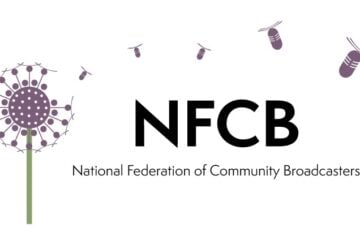Eight things to consider when pledging classical radio this fall

 Classical radio is playing an especially important role in the lives of Americans as a haven from the noise, rancor and tumult inflaming the country in 2016. This fall, we have the opportunity to harmonize with our listeners using a strong case that has the potential to bring more people into the classical family. Here are some ideas to help the on-air tone and messaging of your drive complement the experience listeners have with your station during the 340 days of the year when the balance of music to talk is much higher.
Classical radio is playing an especially important role in the lives of Americans as a haven from the noise, rancor and tumult inflaming the country in 2016. This fall, we have the opportunity to harmonize with our listeners using a strong case that has the potential to bring more people into the classical family. Here are some ideas to help the on-air tone and messaging of your drive complement the experience listeners have with your station during the 340 days of the year when the balance of music to talk is much higher.
1. Consider a theme of “Peace, Calm & Quiet.” We live in a noisy media landscape, and it’s only going to get noisier leading up to Nov. 8. Your station is a haven, an oasis. The tone of the station is consistent. The arts provide intellectual stimulation and celebrate creativity, in contrast to the coarse, contentious discourse available elsewhere. The physical and emotional benefits of the music are well known and felt by our listeners. Make those values resonate with the audience. For multiple-format stations, the goal is to accentuate the value of midday music while acknowledging the high quality of newsmagazines.
2. Make a listener-focused case. When crafting live scripts and spots, try to remove references to “we”, “us” and “our.” Credit listeners for voluntarily supporting something that positively affects their own lives and benefits the community. Ask the programming team for case messages based on their knowledge of the listener, editing them as suggested above. Strive to keep on-air scripts to 100 words or fewer, especially Case & Close, to help maintain good pacing. “Cases” reinforce the listener-station relationship, and “Closes” are calls to action that help “close the deal.” First-person anecdotes by staff can be effective, especially if the pitcher is sharing an experience she had while engaging with listeners, the music or artists.
3. Classical music and giving are matters of the heart. Emotive language is a powerful motivator; financial figures and operating costs, not so much. At the Public Radio Program Directors conference in 2015, I heard one of the coolest things said about a classical station — a listener described Classical WQED-FM in Pittsburgh as “my oxygen.” Testimonials from listeners and members of the arts community can be powerful motivators for support. Incorporate edited comments from your donation forms into real-time pitches.
4. With countless music and media choices available (including algorithmically curated “pure play” options like Spotify and Pandora), it’s important to highlight the distinctiveness of your station, including ways that you are engaged locally. Provide examples of how local arts and culture organizations connect to the community (and vice versa) through the station. It is likely that those organizations would have limited, non–advertising-based media presences if not for a listener-supported station that focuses on the arts. Encourage those in the arts community to participate in the campaign financially and through testimonials or as guest pitchers.
5. Tighten sustainer language. Use only a handful of phrases and repeat them several times an hour in different contexts. Make sure the entire on-air staff uses them throughout the day and the campaign. Use them in web and email campaigns. Don’t assume the audience knows what sustaining memberships are all about. Listener-focused language that highlights convenience, benefits and community enrichment will appeal to potential sustainers.
When you describe sustaining memberships on the air, is a sustainer a person or a method of payment? Do you delve into the operational aspects of being a sustainer on the air — “We take money from your credit card every month, and you can stop or downgrade any time?” My colleague Amanda Goodwin distilled the language to 10 words that resulted in a significant increase in sustainer conversion: “Sustainers are people who make monthly gifts that automatically renew.”
6. Use deadlines and goals strategically. Determine whether a deadline is station-centric or listener-centric. A 10 a.m. deadline for taking advantage of a match or challenge or entering a drawing benefits the listener and can be an effective motivator. On the other hand, hourly financial goals can be station-centric if they have little meaning other than to meet an hourly goal to stay on track. Think about setting financial goals or deadlines that the audience can rally around. Alternatively, consider call goals, with an emphasis on gifts in any amount. Address the listener as an individual, while stressing that there is strength in numbers.
7. If your station offers premiums, try to choose or create gifts that reflect the Peace, Calm & Quiet theme, such as a CD boxed set of peaceful classical music. Leslie Barbera of Forest Incentives suggests the 101 Relaxing Classics six-CD set, the 50 X Relaxing Classics three-CD set, and my favorite, Colour Me Classical, a two-CD set with an adult coloring book (which, of course, are all the rage right now). Another idea is to create a custom T-shirt or bag that proclaims your station as the listener’s source for peace and quiet.
8. If you are planning a “warp drive” this fall, use the Peace, Calm & Quiet theme to reinforce the station’s pledge to deliver more music, just when it is needed most. In the context of a full-length drive, try making a pact with listeners: If they respond robustly during shortened pledge breaks, the station can fill their lives with more music, even during a fundraiser.
Barry Nelson is owner of Nelson & Associates Fundraising. He can be reached at barrynelsonis@verizon.net.







